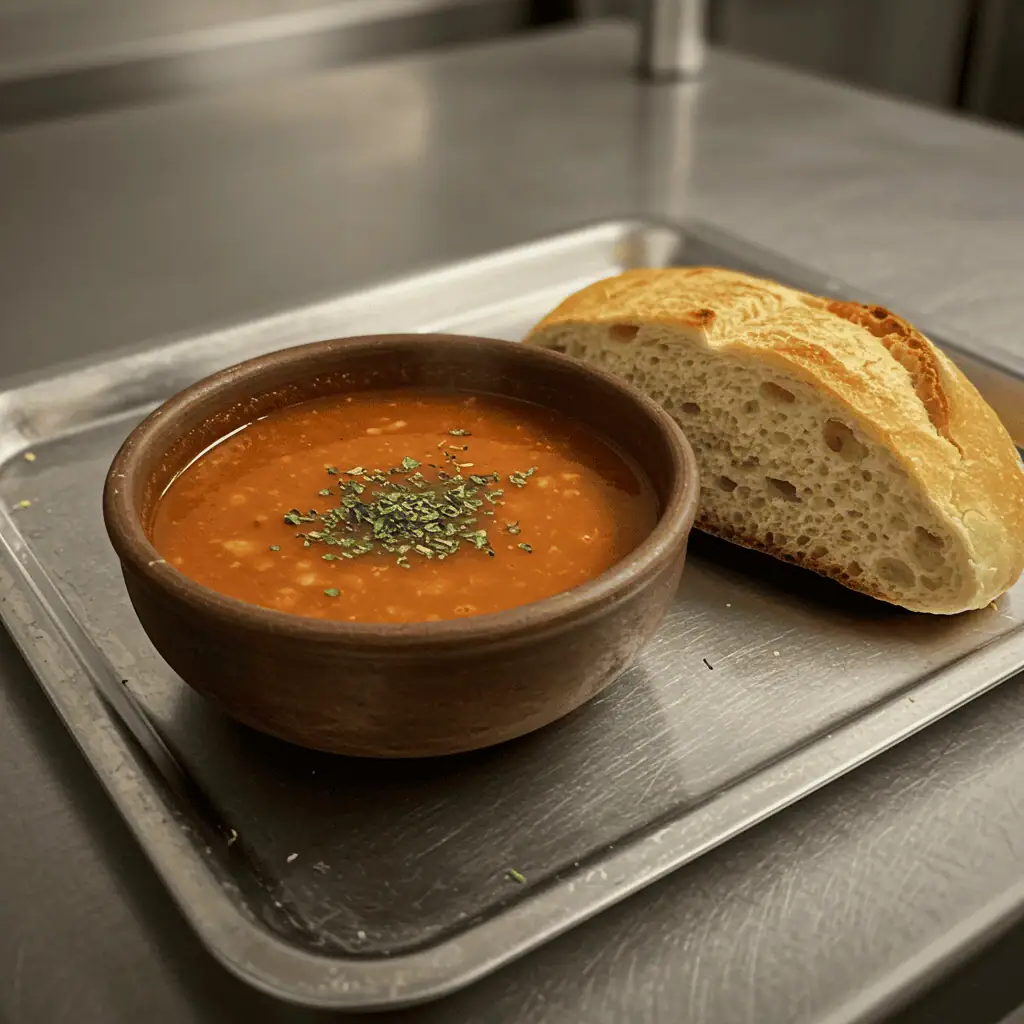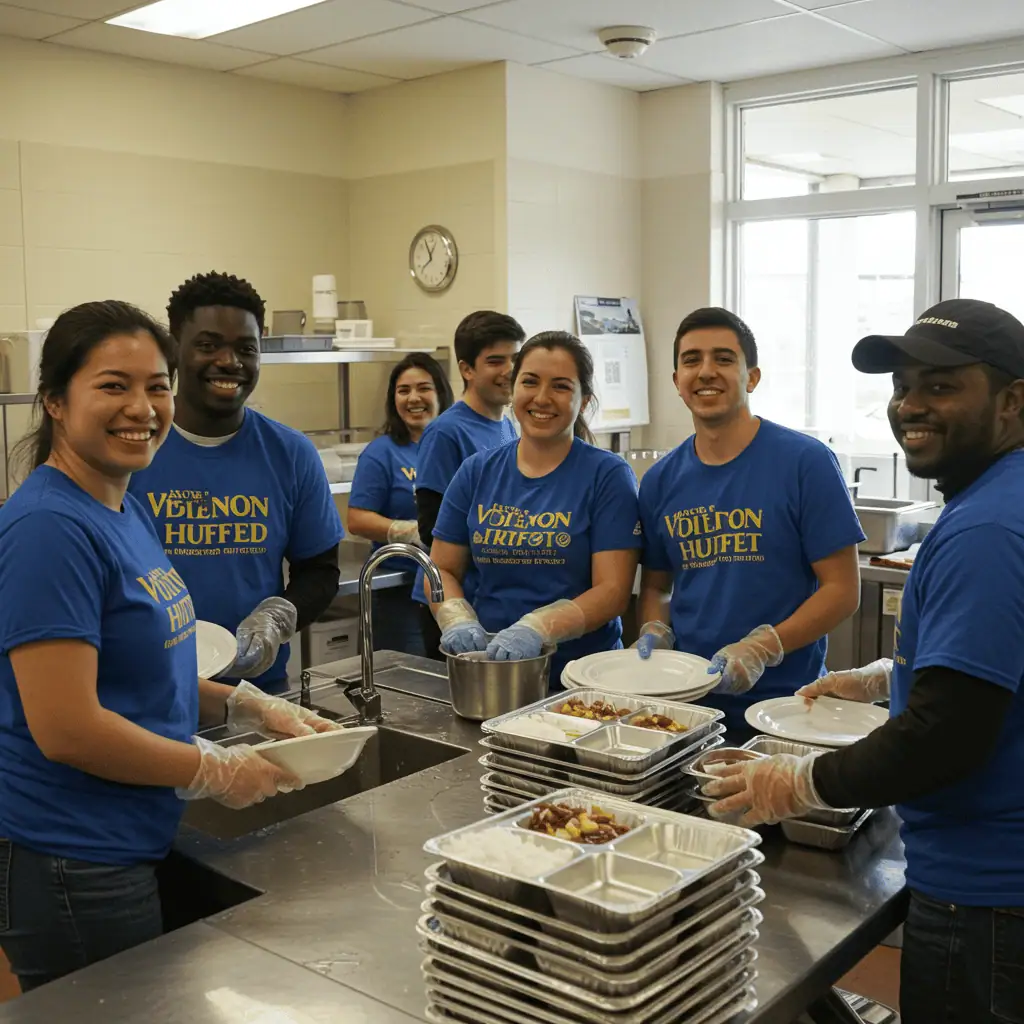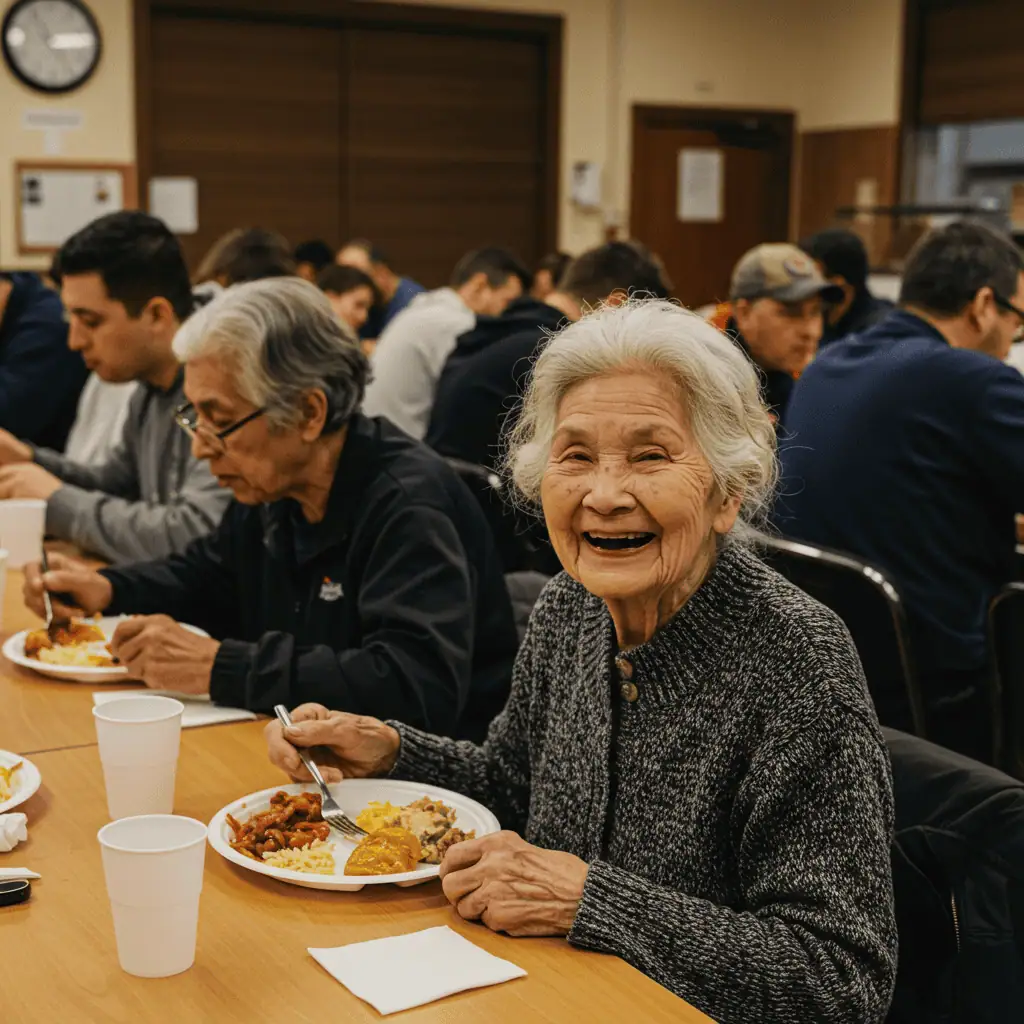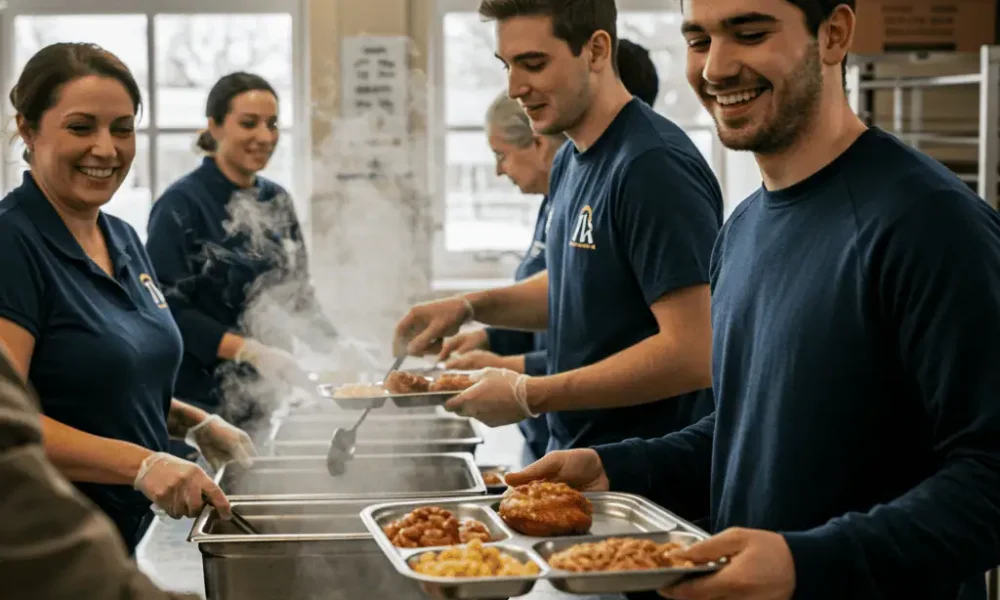Boynton Soup Kitchen – Community Support, Free Meals & Local Impact
Introduction
The Boynton soup kitchen stands as a beacon of hope and compassion in the heart of Boynton Beach, Florida. Serving hundreds of meals every week, it supports individuals and families facing food insecurity with warm meals, dignity, and care. Whether you’re someone in need, a volunteer hoping to give back, or simply curious about how local soup kitchens function, this guide will walk you through everything you need to know.
From its mission and operations to the real impact it has on the community, we’ll explore how the Boynton soup kitchen has become a vital part of the city’s safety net. Don’t miss our vegetarian lunch recipes if you’re exploring healthy, low-cost meal ideas inspired by community kitchens.
Understanding the Boynton Soup Kitchen Mission
History and Purpose of the Boynton Soup Kitchen
The Boynton soup kitchen was founded with a singular purpose: to feed the hungry and serve the underserved with no questions asked. Rooted in compassion, the kitchen started as a small community outreach and has since grown into a full-scale operation, serving hundreds of meals weekly.
The mission is not just to provide food, but to create a space where people feel respected, valued, and supported. Over the years, its scope has expanded to include clothing drives, resource connections, and holiday meal events—making it a vital community hub.
Community Needs That the Soup Kitchen Aims to Serve
Boynton Beach, like many U.S. cities, is home to families facing poverty, veterans without stable housing, and seniors living on fixed incomes. The soup kitchen addresses immediate hunger but also serves as a lifeline to other resources:
- Nutritious hot meals
- Emergency grocery boxes
- Access to community health referrals
- Holiday events with gifts and warm meals
Looking for inspiration? Try our 30-minute low cholesterol meals to see how affordable food can still be nutritious.
By addressing both food and emotional well-being, the Boynton soup kitchen helps people regain a sense of stability, even if just for a moment.
What to Expect at the Boynton Soup Kitchen

How the Soup Kitchen Operates Day-to-Day
The Boynton soup kitchen functions with the efficiency of a well-oiled machine, driven entirely by volunteers, donations, and community support. Most days, the kitchen opens its doors late in the morning and serves lunch to anyone in need—no questions asked, no paperwork required.
Volunteers begin prepping meals as early as 8 a.m., cooking large batches of nutritious foods like rice, vegetables, meats, soups, and occasionally, desserts. The meals are served in a cafeteria-style line, allowing guests to receive hot, freshly prepared food with dignity.
Key daily operations include:
- Meal preparation and plating
- Dining area setup and sanitation
- Distributing hygiene kits or clothing donations
- Cleaning and resetting the space for the next day
Most soup kitchens, including Boynton’s, also follow strict food safety guidelines, especially since the pandemic. Hand sanitizers, gloves, masks (if needed), and regular sanitization are non-negotiables to ensure safety for all.
Volunteer Roles and Visitor Guidelines
Volunteers are the lifeblood of the Boynton soup kitchen. They help with food prep, serving, cleanup, guest assistance, and even organizing food drives. Some also serve as greeters to ensure everyone entering the building feels welcome.
Typical volunteer shifts include:
- Morning prep (chopping vegetables, setting up tables)
- Midday serving (food distribution, assisting elderly guests)
- Afternoon clean-up (dishes, trash, mopping floors)
Visitor guidelines are simple:
- Be respectful to staff, volunteers, and other guests
- Wait your turn in line
- No discrimination or disruptive behavior is tolerated
- Children must stay with a parent or guardian
What You Should Wear to a Soup Kitchen Visit
Whether you’re visiting to eat or volunteering to serve, dressing appropriately is important.
For guests: Wear comfortable, clean clothing. There is no dress code—just basic hygiene and comfort matter most. You’ll be welcomed with open arms, regardless of what you wear.
For volunteers:
- Closed-toe shoes (required for safety)
- Comfortable jeans or pants
- T-shirt or long sleeves
- Hair tied back or in a cap
- Avoid strong perfumes or colognes
- Aprons and gloves are usually provided onsite
Check out our gluten-free desserts for ideas you can even donate to a community meal drive.
Who the Boynton Soup Kitchen Serves
Residents in Need: Hunger in Boynton Beach
Hunger doesn’t always look like an empty pantry. In Boynton Beach, many individuals facing food insecurity are the working poor—people who hold jobs but still struggle to afford groceries. Others are seniors living on limited income, single parents, individuals with disabilities, and those recently experiencing homelessness.
The Boynton soup kitchen welcomes all of them with no requirements, no forms, and no barriers. Whether someone needs a hot meal for the day or uses it as a daily lifeline, the kitchen provides a warm, welcoming environment without judgment.
The community’s diversity is reflected in its guests:
- Low-income families
- Veterans and retired seniors
- Disabled individuals
- Unemployed residents
- Children in need of nutritional support
By addressing basic hunger, the soup kitchen plays a crucial role in improving overall health, reducing stress, and supporting long-term stability.
Families, Seniors, Veterans – All Are Welcome
The Boynton soup kitchen’s inclusive nature means it serves people of all ages and backgrounds. Families can dine together, seniors can enjoy warm meals in a social environment, and veterans often receive not just food but appreciation and conversation.
Each group has unique needs, and the kitchen adjusts accordingly:
- Seniors may receive soft foods or take-home options
- Families often get extra portions or food boxes
- Veterans are connected to other assistance services if available
The atmosphere is built around dignity, warmth, and respect. It’s a no-judgment zone that focuses on support, not status.
Meals and Services Offered Beyond Food
While hot meals are the foundation, the Boynton soup kitchen offers more than just nourishment. Over time, it has evolved into a resource center where people can receive:
- Personal hygiene kits (toothpaste, soap, shampoo)
- Basic clothing and socks
- Cold water in summer and warm blankets in winter
- Referrals to housing and employment services
- Holiday food drives and back-to-school supply giveaways
Looking for a recipe that reflects that same spirit of care? Discover great ideas like our bar harbor New England clam chowder recipe—simple, warm, and deeply comforting.
By extending beyond the plate, the Boynton soup kitchen shows how community care can feed not just bodies, but spirits too.
Donations, Funding, and Support Networks
How the Boynton Soup Kitchen Is Funded
The Boynton soup kitchen operates entirely through community generosity—no federal funding, no profit. Its survival depends on donations from individuals, churches, local businesses, and nonprofit organizations. From $5 monthly gifts to large-scale food donations, every contribution keeps the kitchen running.
The main sources of funding include:
- Monetary donations (one-time or recurring)
- Food drives organized by schools, churches, or civic groups
- Grants from local foundations or community programs
- Volunteer labor, which reduces operating costs significantly
Unlike large food banks, local soup kitchens like Boynton often face tighter margins and must plan carefully to serve consistent meals. This makes community involvement essential to sustainability.
How You Can Donate Food, Time, or Money
There are several ways to support the Boynton soup kitchen:
1. Donate Food:
Shelf-stable items like canned vegetables, beans, pasta, and rice are always needed. Fresh produce and frozen meats are welcome too—just call ahead to schedule drop-off.
2. Donate Time:
Volunteering is one of the most impactful ways to help. Whether you serve food, prep veggies, clean tables, or sort clothing donations, your time has a direct effect.
3. Donate Money:
Monetary donations can be made online (if the kitchen has a website), by check, or through community fundraisers. Funds help purchase bulk ingredients, cleaning supplies, and maintain the kitchen space.
Don’t miss our high-protein banana pancake recipe—great for donation breakfasts or sharing with families in need!
Partnerships With Local Businesses and Churches
Many local businesses in Boynton Beach support the soup kitchen regularly by donating food, organizing fundraisers, or sending employee volunteer teams. Restaurants and grocery stores often contribute unsold food under “rescue” programs, which the kitchen quickly puts to use.
Churches also play a key role by:
- Hosting food drives
- Sponsoring meals during holidays
- Offering financial support through tithing programs
- Sharing the kitchen’s mission with their congregations
These partnerships form the backbone of the soup kitchen’s support network, helping it weather emergencies and reach more people throughout the year.
Volunteering at the Boynton Soup Kitchen

Why Volunteering Matters for the Community
Volunteering at the Boynton soup kitchen is more than just lending a helping hand—it’s becoming a lifeline for someone who may be facing their hardest day. Volunteers are often the first smiles guests see, the hands that serve meals, and the heart behind the kindness offered daily.
Every meal plated, every table wiped, every kind word exchanged builds a stronger, more connected community. Beyond that, volunteering teaches empathy, strengthens social bonds, and gives people a chance to contribute something meaningful right where they live.
Boynton’s soup kitchen has consistently relied on volunteers for:
- Food prep and cooking assistance
- Serving meals and drinks
- Cleaning, sanitizing, and organizing
- Greeting guests and helping them feel welcomed
- Sorting food and clothing donations
Whether you’re a student, retiree, or working professional looking to give back, there’s a place for you.
How to Sign Up and What to Expect
Signing up is usually simple. Most soup kitchens allow volunteers to join by filling out an online form or calling directly. The Boynton soup kitchen typically schedules volunteers in shifts—morning prep, lunch serving, and afternoon cleanup.
What you’ll need to do before your first shift:
- Confirm your scheduled time
- Arrive early to get instructions and meet the team
- Review safety and hygiene guidelines
- Ask questions—staff are always happy to help
On your first day, expect to jump right in. Tasks may include chopping vegetables, serving food trays, stacking plates, or just chatting with a guest who needs a moment of warmth.
Check out our amylu meatballs air fryer recipe for a quick meal idea to try with fellow volunteers after your shift!
What to Wear and Bring as a Volunteer
Dressing appropriately ensures safety and professionalism, even in a casual environment like a soup kitchen.
Wear:
- Closed-toe shoes (non-slip preferred)
- Long pants or jeans
- Comfortable shirt with sleeves
- Hair tied back or under a hat
- No loose jewelry or flashy accessories
Bring:
- A refillable water bottle
- A great attitude and willingness to help
- Your own apron, if desired (most are provided)
- Minimal belongings—storage is limited on-site
Volunteers often say their time at the kitchen is more rewarding than they ever expected, leaving with a sense of gratitude and purpose.
Boynton Soup Kitchen During COVID-19 and Shutdowns
When Were the Soup Kitchens Shut Down?
In early 2020, as the COVID-19 pandemic swept across the country, many soup kitchens—including the Boynton soup kitchen—were forced to temporarily close their dining rooms to follow health and safety regulations. This shutdown typically occurred in March or April of that year, in alignment with CDC guidelines and local ordinances.
However, the closure didn’t mean the end of support. Most soup kitchens, including Boynton’s, quickly adapted by transitioning to takeout and delivery models to continue providing meals to the community while protecting volunteers and guests from exposure.
Some soup kitchens operated entirely outdoors, while others distributed pre-packaged meals at drive-through stations. Despite the abrupt change, the mission to feed the hungry never stopped—it just evolved.
How Boynton Adjusted to Pandemic Conditions
The Boynton soup kitchen swiftly implemented new protocols to ensure the safety of everyone involved. Some of these measures included:
- Shifting to pre-packaged, grab-and-go meals
- Limiting the number of volunteers on-site at one time
- Distributing food outdoors to reduce indoor gatherings
- Enforcing mask mandates, temperature checks, and sanitization stations
- Temporarily suspending non-essential services like clothing drives
These adaptations kept the kitchen operational while minimizing risk. Despite the challenges, the kitchen managed to serve hundreds of meals per week—often even more than before, due to rising economic hardship and job loss.
Looking for more comforting meal ideas during difficult times? Check out our cottage cheese egg bites—perfect for meal prep and protein-packed support.
Reopening and Current Operations
As restrictions began to ease in late 2021 and early 2022, the Boynton soup kitchen gradually reopened its dining areas with added precautions. Today, it operates under a hybrid model—offering both sit-down service and to-go options to meet different needs.
Safety protocols remain in place, including:
- Frequent sanitizing
- Volunteer health checks
- Mask-wearing in food prep zones
- Social distancing when possible
The pandemic revealed just how essential soup kitchens are. The Boynton soup kitchen not only survived—it became even more resilient and responsive to the changing needs of its community.
Comparing Real-Life Soup Kitchens vs. Hay Day Game Soup Kitchen
What Is the Soup Kitchen in Hay Day?
If you’re familiar with the mobile farming game Hay Day, you might have come across a feature known as the “Soup Kitchen.” In the game, it’s a production building that lets players create soups and broths using virtual ingredients they grow or harvest on their farm. It adds a fun layer of strategy to gameplay, where players balance crops, recipes, and production time.
But while the in-game soup kitchen is all about maximizing virtual goods and profits, real-world soup kitchens like Boynton’s focus on something much deeper: feeding people in need, building community, and offering dignity and warmth to those going through tough times.
How Expensive Is the Soup Kitchen in Hay Day?
In Hay Day, unlocking and upgrading the soup kitchen involves spending in-game currency, which can take hours of farming or purchasing diamonds with real money. Depending on your level and strategy, building the soup kitchen might cost:
- Coins: Usually around 250,000 coins (in-game)
- Building time: Several hours or days
- Additional costs: Upgrades, boosters, and ingredients
So while there’s a “cost,” it’s entirely virtual and part of the game economy. It has no connection to the real cost or operations of a soup kitchen like Boynton’s.
Real Impact vs. Virtual Experience
Let’s break it down clearly:
| Aspect | Hay Day Soup Kitchen | Boynton Soup Kitchen (Real Life) |
|---|---|---|
| Purpose | Game-based production building | Feeds real people in need |
| Cost | In-game coins and diamonds | Funded by community donations and volunteers |
| Impact | Game strategy and player progress | Provides meals, hope, and essential resources |
| Interaction | Tapping and swiping on a screen | Volunteering, donating, cooking, and serving |
While games like Hay Day can be entertaining and spark curiosity, they can also be an opportunity to educate players about real-world food insecurity and encourage community support for local kitchens.
Want to get involved beyond the screen? Don’t miss our cheap meal prep ideas week to start giving back with budget-friendly, nutritious meals anyone can make.
Community Stories from Boynton Soup Kitchen

Stories from Visitors and Volunteers
The Boynton soup kitchen isn’t just a place for meals—it’s a place for connection, dignity, and shared humanity. Every day, it brings together people from all walks of life: those seeking help, and those ready to offer it.
Angela, a retired nurse and long-time volunteer, recalls, “I came here to give, but I receive something every time I serve. The gratitude in a guest’s eyes after a hot meal is more powerful than anything I’ve done in a hospital.”
Mark, a guest who fell into homelessness after losing his job, says, “The Boynton soup kitchen helped me survive when I had nothing. They didn’t treat me like a problem—they treated me like a person. I now have a part-time job and still stop by for a warm lunch and some kind words.”
Teen volunteers, including high schoolers completing community service, often say their hours here change their perspective. Many come back long after graduation, realizing how impactful their time was in shaping empathy and community awareness.
These stories speak louder than statistics. They show that a bowl of soup can be the start of a second chance.
Impact on Local Lives and Families
The reach of the Boynton soup kitchen extends beyond the individual—it strengthens entire families. Parents struggling to feed their children find stability here. Elderly residents come for more than just food—they come for conversation and connection.
During the holiday season, the kitchen becomes a place of celebration and comfort, offering Thanksgiving dinners, Christmas gifts for children, and extra pantry boxes for families.
Some direct impacts include:
- Families avoiding eviction due to money saved from meal support
- Veterans gaining access to VA resources through volunteer connections
- Seniors staying nourished when mobility prevents them from shopping or cooking
Want to support families in a simple way? Discover our vegetarian lunch recipes that are budget-friendly, nutritious, and perfect for donation or home use.
Testimonials That Inspire Action
Here are a few brief testimonials from real volunteers and guests:
“They fed my body, but more importantly, they lifted my spirit.” – Toni, guest
“This kitchen taught me more about kindness than any textbook ever could.” – Chris, student volunteer
“When I lost everything, they gave me back my dignity. I’ll never forget that.” – Juan, U.S. Army Veteran
Every visitor, every meal, and every volunteer hour contributes to a ripple effect of compassion throughout Boynton Beach.
How to Find or Start a Soup Kitchen in Your Area
Locating Soup Kitchens Near You
Whether you’re looking for help or ready to volunteer, finding a local soup kitchen is easier than ever. Most communities have at least one active food service site—operated by nonprofits, churches, or local governments.
Here’s how to find one nearby:
- Use directories like Feeding America (feedingamerica.org)
- Search “soup kitchen near me” on Google Maps
- Check local churches, synagogues, or mosques—they often host food programs
- Contact your city’s community services department
- Ask your local library or school—they’re often connected to resource networks
In Boynton Beach, community boards and local Facebook groups regularly post about soup kitchen hours, events, and volunteer opportunities.
Need meal ideas that can be donated or prepped affordably? Check out our 30-minute low cholesterol meals—perfect for feeding a crowd on a budget.
Starting a Local Soup Kitchen: Steps and Resources
Inspired by what Boynton has accomplished? You can take action by starting your own soup kitchen or helping expand an existing one. It doesn’t require a fancy space or big funding—just commitment and community collaboration.
Here’s how to begin:
- Assess Local Need: Talk to shelters, churches, and community groups to determine food insecurity levels.
- Gather a Team: Partner with friends, neighbors, or nonprofits. Volunteers are your foundation.
- Secure a Location: Churches, schools, or community centers often allow use of kitchens and dining areas.
- Plan a Menu: Keep it simple—soups, pasta, sandwiches, and vegetables.
- Ensure Permits & Safety: Connect with your local health department for food safety regulations.
- Find Donations: Reach out to grocery stores, bakeries, and local restaurants for surplus food.
- Promote the Service: Use social media, flyers, and word of mouth to reach those in need.
You don’t have to start big—many successful kitchens began as once-a-week meal programs and grew into daily operations, just like the Boynton soup kitchen.
How Boynton Can Be a Model for Others
What sets the Boynton soup kitchen apart isn’t just the meals—it’s the model:
- Compassion without judgment
- Community-driven funding
- Consistent, reliable service
- Flexible and responsive to crises (like COVID-19)
- Volunteer-focused with minimal bureaucracy
Other communities can replicate this with local flavor—adapting Boynton’s approach to their unique demographics and needs.
If you want to make a lasting difference where you live, starting a soup kitchen or even supporting an existing one is a powerful way to impact lives directly.
FAQs: Boynton Soup Kitchen
When were the soup kitchens shut down?
Most soup kitchens, including the Boynton soup kitchen, were temporarily shut down or shifted to takeout service in early 2020, during the COVID-19 pandemic. These closures were safety measures following public health guidelines. While indoor dining paused, many kitchens adapted by offering pre-packed meals, drive-through pickups, and outdoor distribution. By late 2021, most reopened with new safety protocols in place.
What do you wear to a soup kitchen?
If you’re volunteering, wear comfortable, modest clothing—closed-toe shoes, long pants, and a shirt with sleeves. Hair should be tied back or covered, and minimal jewelry is best. Aprons and gloves are usually provided.
If you’re visiting as a guest, there is no dress code. Wear clean, comfortable clothes—everyone is welcome, and the focus is on nourishment, not appearances.
Do soup kitchens cost money?
No, soup kitchens like the one in Boynton Beach are completely free. They exist to serve those in need—no payment, ID, or documentation required. While donations are appreciated from those able to give, no guest is ever charged for a meal.
How expensive is the soup kitchen in Hay Day?
In Hay Day, the soup kitchen is a virtual building in the game’s production chain. It costs in-game currency (coins or diamonds) to build and upgrade. This cost has no relation to real soup kitchens and is part of a simulated farming economy. It’s meant for entertainment and carries no real-world monetary or charitable value.









